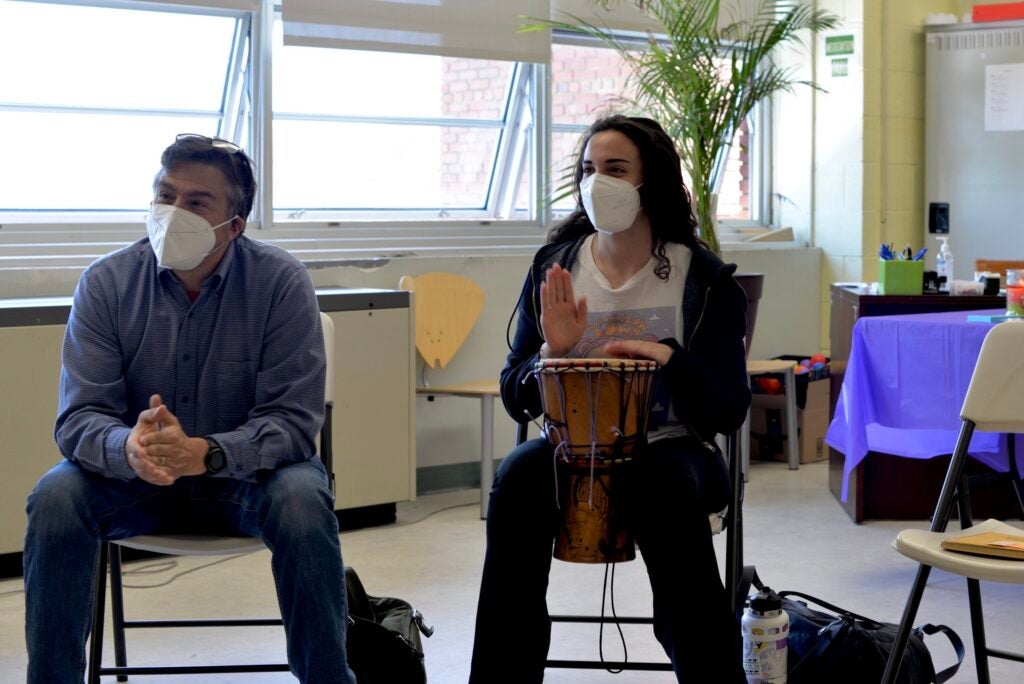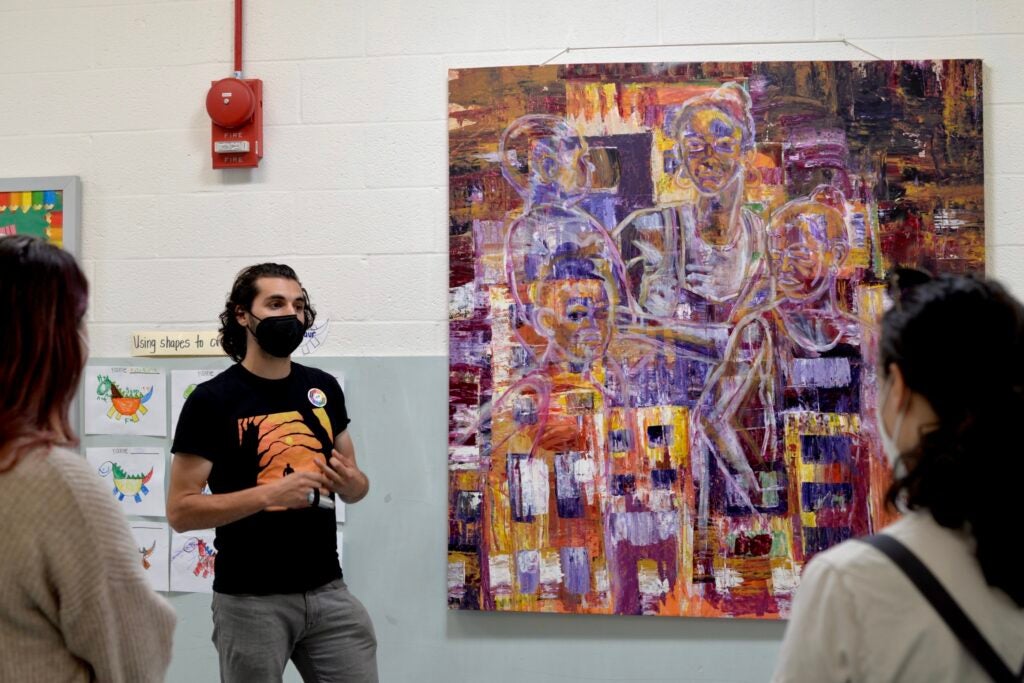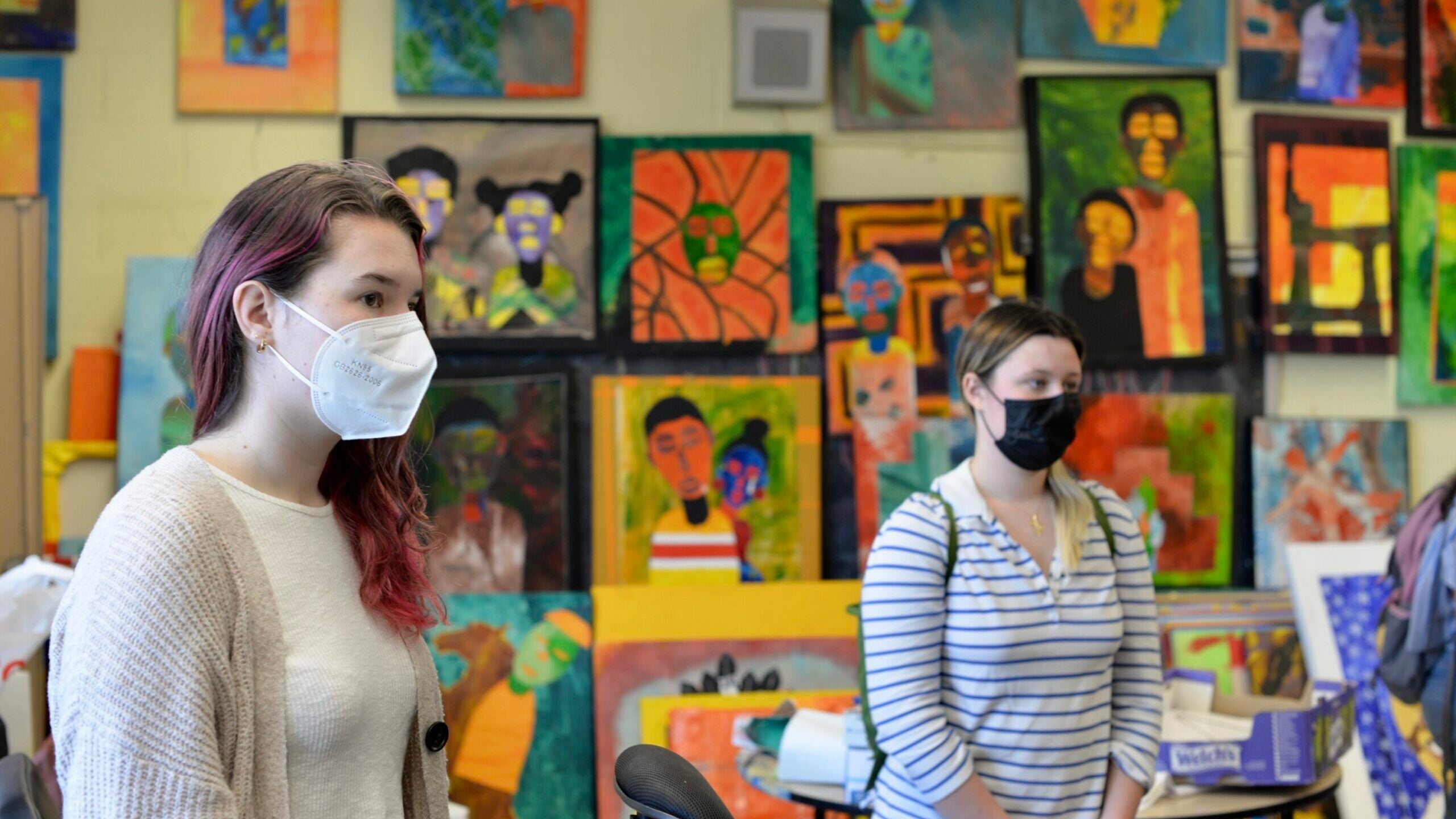Social Responsibility Network Builds Connections in Washington Community
The Social Responsibility Network, a mentorship program for students in Georgetown’s College of Arts and Sciences, recently visited Life Pieces to Masterpieces, a non-profit organization that has operated in Northeast DC for more than two decades.
Students were welcomed into the Life Pieces space in Drew Elementary School, where they operate their flagship afterschool program, ongoing Saturday training for high school students, summer enrichment and Color Me Community workshops. The “highly interactive workshops” provide a “nurturing and non-judgemental environment for people of all races to safely grapple with issues that deeply divide and separate us from one another.”
Instead of simply touring the space and learning about their mission, Georgetown students and staff were invited to partake in a Color Me Community workshop.
An Egalitarian Paradigm for Service
“I absolutely loved the opportunity to do this workshop because it was so unique and valuable,” says Marcella Wiggan (C’23). “Particularly in social impact, I think there is a tendency to jump to solutions and start building something new without doing the work to understand the problems and our roles in them. Like they shared in the workshop, one cannot meaningfully ‘do social impact’ without a genuine engagement with your own identity and an understanding of how you show up in different spaces.”
The Color Me Community workshop helped reframe the typical lens through which service-oriented careers are understood.
“Particularly because we are predominantly white and affluent Georgetown students entering a space of predominantly Black and low-income people, it is critical that we understand our roles,” Wiggan says. “And do not reduce these dynamic interpersonal connections to those ‘serving’ and those ‘being served.’

Dean Chiarolanzio and Maggie Cammaroto (C’22) partake in a Color Me Community workshop.
Founded in 2019 under the direction of Dean Thomas Chiarolanzio, the SRN gives students in the College an opportunity to explore post-graduate careers in the non-profit and social justice sectors.
“The goal behind the Social Responsibility Network is to expose students to the social impact sphere, which can include community development, non-profit work, education and more,” says Dean Chiarolanzio. “Our visit to Life Pieces to MasterPieces provided a terrific opportunity for our students to meet and learn from compassionate and inspirational leaders who are dedicating their lives to helping young black males in the community. It was a powerful and amazing experience.”
For Wiggan, the Site Visits Committee Chair for the group, her participation in the SRN has been integral to her Georgetown career and post-college plans.
“I am extremely passionate about advocacy and impact, which in many ways is shaped by my own identity and background coming from a two-mom and multiracial family in Oakland, CA,” Wiggan says. “I’ve found it extremely enlightening to see the parallels and disconnects of how social issues are perceived and addressed at the scales of the Georgetown community, the DC community and how these dynamics relate to what is going on in the world more broadly. ”
Individual Stories, Collective Masterpieces
Life Pieces was co-founded in 1996 by Larry Quick, Mary Brown, and Ben Johnson. Quick, an artist born and raised in Ward 7’s Kenilworth Parkside & Kenilworth Courts public housing complexes, recognized that young Black boys and men in the community had scant opportunities for artistic expression and self-reflection.
Artwork as an avenue for growth was an apparent solution. After graduating from the Corcoran School of Art, Quick pioneered a unique art style, which involves painted canvas that is cut and sewn together to create a distinct visual look. That process has become the distinctive, defining art style of Life Pieces.

Andrew Blickle explains the unique Life Pieces art style to SRN students.
The process of creating a signature work can be subdivided among students, with individual steps completed by artists of varying ages and experience levels. The final works often tell an individual’s story through community expression. Needless to say, the program has had an indelible impact on the young boys and men who go through it, the communities it serves and the city to which it is home.
In 2013, Georgetown honored the work of Mary Brown, one of Life Pieces’ co-founders, with the John Thompson Jr. Legacy of a Dream award. In the decade since, Brown has continued to change the lives of students who go through the Life Pieces program.
“Twenty-six years of supporting our Black boys and young men as they transform their lives and communities has required the effort of a mosaic of human beings,” says Brown. “People of all backgrounds must show up ‘whole’ to truly engage in the work we do–recognizing that we all have opportunities for growth and learning in every situation, but also that we each have unique gifts to contribute to others. We were inspired by the SRN students who do exactly that each day, and joined us for a beautiful, powerful exchange that can begin yet another long-term mutual partnership with our family at Georgetown.”
While their programming has expanded and adapted over the years, their commitment to helping their students grow and flourish has not. Even now, Life Pieces leadership and staff are exploring new ways to expand their offerings to inspire young girls in the community looking for artistic outlets.
“I was moved to tears by the art the students had created about their lives,” says Maggie Cammaroto (C’22). “It truly shows how powerful and essential creative expression is. Since our visit, I have repeatedly remembered their philosophy on power – we can muster internal power through control over our thoughts, words and actions.”
